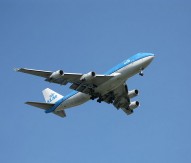
Cleaning the Sky
Described as the ‘most ambitious aeronautical research programme ever launched in Europe’, Clean Sky is a specialised public private partnership between the European Commission and industry which is dedicated to developing new, innovative technologies aimed at reducing the effects of airplanes and air transport on the environment.
The Clean Sky JTI was first launched under the EU’s Seventh Framework Programme in 2008 with a budget of €1.6bn, a 50:50 split between the Commission and the aeronautical industry. The JTI seeks to help achieve a number of targets set by ACARE, the European Technology Platform for Aeronautics & Air Transport. Namely, the goals are:
- A 50% reduction of CO2 emissions through drastic reduction of fuel consumption;
- An 80% reduction of NOx (nitrogen oxide) emissions;
- A 50% reduction of external noise; and
- A green product lifecycle: design, manufacturing, maintenance and disposal/recycling.
The PPP particularly encourages the involvement of SMEs and covers the entire aeronautic supply chain. Clean Sky is open to members from both EU member states as well as associated countries. The JTI will be managed by the Clean Sky Joint Undertaking until 31 December 2017.
Clean Sky is one of just five JTIs currently in operation in the EU – the others being IMI, Eniac, ARTEMIS and FCH. This week, in a special press breakfast meeting at the European Parliament, and attended by horizon2020projects.com, the five executive directors of the JTIs presented their ambitions and achievements thus far.
Progress
Eric Dautriat is the executive director of Clean Sky. He began his presentation by outlining the JTI’s core aims: “We have a dual target – action for the citizen and competitiveness together. Aviation is contributing in a limited way to CO2 emissions – maybe 3%, maybe less than what it could be. But it will increase because air transport is seeing very significant growth, equal to about 5% per year so we have to take action. We are also working on noise in order to reduce significantly the noise footprint, significantly in the vicinity of airports.
“Clean Sky is a €1.6bn programme and it is also a PPP – 50:50 funding between the EU and industry. The whole European aviation industry is participating in Clean Sky in Europe and the technical target is to bring technologies together in integrated demonstrators. Example technologies include new engines, new aircraft and new equipment – all new products which will contribute through better engine performance to reduce fuel use, the running costs of the aircraft and reduce the CO2. Through this JTI we are addressing both targets.”
Concluding his short presentation, Dautriat drew attention to the range of partners involved in the PPP, including both SMEs and large MNCs: “We have in total, in Clean Sky, an estimated 570 participants in a programme which is co-ordinated by the larger technical operators, e.g. Airbus and AgustaWestland. We also have many SMEs that are involved in Clean Sky as well as academia. We are integrating the innovation chain from the upstream activities to the medium and large size industry.”
It is estimated that, as a result of the Clean Sky technological developments, aviation CO2 emissions could be reduced by over 20% with respect to base levels in the year 2000. Specific innovations to emerge from the PPP include the open rotor, laminar wings and a high compression engine for light helicopters.
Clean Sky 2
The JTI is will receive fresh and increased funding under Horizon 2020. The Clean Sky 2 initiative (CS2) was announced along with four additional JTIs in July 2013 and will seek to develop new devices for civil aviation in a bid to further reduce aircraft emissions and noise; CS2 will also aim to secure the long-term competitiveness of the European aviation industry. The refreshed JTI is expected to receive a budget of more than €4bn, with €1.8bn coming from Horizon 2020. A further investment of €2.25bn will come from industry.
CS2 will seek to further reduce NOx by 20-30% compared to aircraft entering service in 2014 in addition to increased aircraft fuel efficiency, consequently reducing CO2 emissions by 20-30%. CS2 is set to officially launch on 1 January 2014 and is expected to run for ten years.




